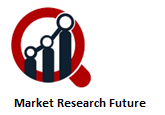The steel market encompasses a wide range of products, from raw materials like iron ore and coal to finished goods such as sheet metal, beams, and pipes. The demand for steel is closely linked to economic growth, with construction and manufacturing sectors being the primary drivers. Rapid urbanization, infrastructure development, and industrialization in emerging economies continue to fuel demand for steel, while developed economies require it for maintenance, renovation, and technological advancements.
Trends Shaping the Steel Market:
- Global Economic Trends: Economic growth, trade policies, and currency fluctuations significantly influence the steel market. As economies recover from the impacts of the COVID-19 pandemic, pent-up demand for construction and manufacturing is driving steel consumption. However, uncertainties surrounding trade tensions and geopolitical conflicts can disrupt supply chains and affect market dynamics.
- Technological Advancements: Innovation plays a crucial role in the steel industry, with advancements in manufacturing processes, automation, and material science driving efficiency and product quality. Technologies such as electric arc furnaces (EAF), continuous casting, and advanced alloy development enhance productivity while reducing environmental impacts. Additionally, digitalization and data analytics are transforming operations, enabling predictive maintenance and optimized production.
- Sustainability and Environmental Regulations: Environmental concerns have led to a growing emphasis on sustainability within the steel industry. Steelmakers are investing in greener technologies, such as hydrogen-based steel production and carbon capture, to reduce carbon emissions. Furthermore, regulatory measures aimed at curbing pollution and promoting energy efficiency are shaping the industry's long-term sustainability strategies.
- Supply Chain Resilience: The steel market is vulnerable to supply chain disruptions caused by factors like natural disasters, transportation constraints, and geopolitical tensions. Recent events, such as the Suez Canal blockage and the COVID-19 pandemic, have highlighted the importance of supply chain resilience. Companies are diversifying suppliers, investing in inventory management systems, and exploring alternative transportation routes to mitigate risks.
- Shifts in Consumer Preferences: Changing consumer preferences and market trends influence the demand for steel products. For instance, the growing popularity of electric vehicles (EVs) and renewable energy infrastructure drives demand for high-strength steel and specialized alloys. Similarly, trends in architecture and interior design influence the demand for aesthetic steel products, such as stainless steel finishes and decorative elements.



